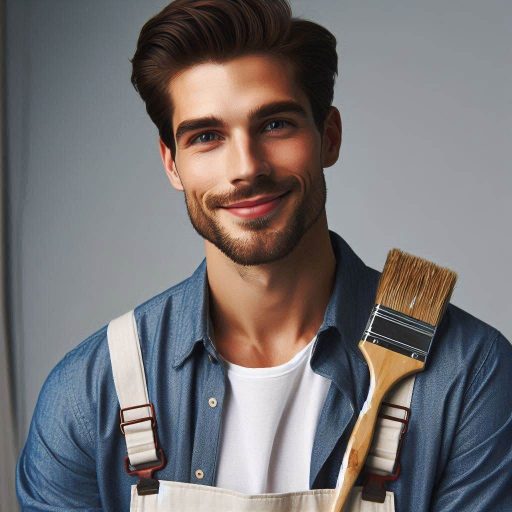Introduction
A fashion stylist can work either as a freelancer or in-house with a company.
Understanding the difference between these two roles is crucial for anyone considering a career in fashion styling.
A freelance fashion stylist operates independently.
They manage their own schedule, work with multiple clients, and handle their own marketing.
Freelancers often work on a project-by-project basis, which offers flexibility but requires them to seek out new opportunities constantly.
In contrast, an in-house fashion stylist is employed by a specific company or brand.
They typically work on a full-time or part-time basis and focus on styling for that company’s needs.
Their role is more stable, with a fixed schedule and a consistent team environment.
The key differences between these roles lie in flexibility and stability.
Freelancers enjoy the freedom to choose their projects and clients.
However, they face uncertainty and must handle all aspects of their business.
In-house stylists benefit from job security and a structured work environment but may have less control over their projects.
This post will delve into the pros and cons of each option.
Freelance styling offers independence and variety but comes with instability and self-management challenges.
In-house styling provides stability and teamwork but may lack the freedom and diversity of projects.
Transform Your Career Today
Unlock a personalized career strategy that drives real results. Get tailored advice and a roadmap designed just for you.
Start NowExploring these aspects will help you determine which career path aligns best with your goals and preferences.
Pros of Being a Freelance Fashion Stylist
Flexibility in Working Hours and Schedule
As a freelance fashion stylist, you control your work hours.
You can set your schedule based on personal preferences and commitments.
This flexibility allows you to balance work with other life responsibilities.
It also means you can work during your most productive times, leading to better quality results.
The ability to choose when and where to work reduces stress and increases job satisfaction.
Ability to Work with a Variety of Clients and Projects
Freelance stylists have the freedom to work with diverse clients and projects.
This variety keeps the work exciting and helps you build a broad portfolio.
You can choose projects that align with your interests and skills, enhancing professional growth.
Working with different clients also allows you to learn new trends and techniques.
This variety keeps your work dynamic and engaging.
Potential for Higher Earnings, Especially with a Strong Client Base
Freelance fashion stylists have the opportunity to earn more than their in-house counterparts.
With a solid client base, you can set higher rates and take on more work. Your earnings are directly tied to your effort and reputation.
Building a strong network of clients and successfully managing multiple projects can lead to significant income growth.
Transform Your LinkedIn into a Job Magnet
Picture recruiters reaching out to you daily. We craft personalized LinkedIn profiles that stand out, boosting your visibility in ways others can't. Elevate your career now.
Upgrade NowThis potential for higher earnings is appealing for many in the industry.
Independence in Decision-Making and Creative Direction
As a freelancer, you have complete control over your creative decisions.
You can choose the styles, trends, and approaches that resonate with your vision.
This independence fosters creativity and allows you to build a personal brand.
You are not bound by a company’s aesthetic or preferences, giving you the freedom to explore and innovate.
This creative freedom can lead to a more fulfilling and unique career.
Read: Art Conservator vs. Art Restorer: Key Differences
Cons of being a freelance fashion stylist
When it comes to working as a freelance fashion stylist, there are several cons to consider:
Inconsistent income and job security
One of the biggest challenges of being a freelance fashion stylist is the inconsistency in income.
Unlike in-house stylists who have a fixed salary, freelancers’ pay can vary greatly from month to month.
This unpredictability can make it difficult to budget and plan for the future.
Additionally, freelancers do not have the same job security as in-house stylists, as they are often hired on a project-by-project basis.
Need to handle administrative tasks like invoicing and marketing
As a freelance fashion stylist, you are not only responsible for styling clients but also for managing the business side of things.
This means handling administrative tasks such as invoicing, marketing, and client communications.
Craft a Resume That Tells Your Story
At American Profession Guide, we craft resumes and cover letters that tell your unique professional story. Stand out with documents tailored to your industry and showcase your strengths to land your dream job.
Email UsThis can take up a significant amount of time and energy, which could otherwise be spent styling.
Lack of benefits like health insurance and paid time off
Unlike in-house stylists who typically receive benefits such as health insurance and paid time off, freelancers are responsible for obtaining their own benefits.
This can be costly and time-consuming, as freelancers need to research and purchase insurance plans on their own.
Additionally, freelancers do not have the luxury of paid time off, meaning they do not get paid when they are not working.
More challenging to build a strong reputation and client base initially
Building a strong reputation and client base as a freelance fashion stylist can be challenging, especially in the beginning.
Without the backing of a reputable fashion house or agency, freelancers need to work extra hard to prove themselves to clients.
This can involve networking, marketing, and offering discounts or promotions to attract new clients.
It can take time to establish a loyal client base and build a solid reputation as a freelancer.
In short, while there are many benefits to working as a freelance fashion stylist, such as flexibility and creative freedom, there are also several cons to consider.
Freelancers must be prepared for the challenges of inconsistent income, administrative tasks, lack of benefits, and building a client base.
By weighing the pros and cons carefully, aspiring freelance stylists can make an informed decision about whether freelancing is the right path for them.
Read: Famous American Fashion Stylists and Their Stories
Pros of being an in-house fashion stylist
Stable income and benefits package
One of the key advantages of being an in-house fashion stylist is the stable income and benefits package offered by the company.
This includes essential benefits like health insurance and paid time off, providing financial security and peace of mind.
Opportunity for mentorship and professional development
Working in-house allows for mentorship and professional development opportunities.
Experienced colleagues and supervisors can provide guidance and support, helping you grow and improve your skills within the company.
Team collaboration and networking opportunities
Being part of an in-house team offers chances for collaboration and networking.
Working closely with colleagues on projects can lead to valuable connections and opportunities for career advancement within the industry.
Consistent workflow and projects from the company
In-house fashion stylists benefit from a consistent workflow and projects from the company.
This helps in planning and managing workload effectively, ensuring a steady stream of work and income.
Read: Day in the Life of an Art Conservator/Restorer

Cons of being an in-house fashion stylist
When considering a career as an in-house fashion stylist, it’s essential to weigh the pros and cons carefully.
While there are many advantages to working within a company, there are also some drawbacks that you should be aware of.
In this section, we will focus on the cons of being an in-house fashion stylist.
Limited creative freedom due to company guidelines and brand image
One of the significant drawbacks of being an in-house fashion stylist is the limited creative freedom that comes with working within a company.
Unlike freelance stylists who have the autonomy to choose their creative direction, in-house stylists are often bound by company guidelines and brand image.
This can be restrictive and hinder your ability to fully express your creative vision.
Less flexibility in working hours and schedule
Another downside of being an in-house fashion stylist is the lack of flexibility in working hours and schedule.
In-house stylists are typically required to adhere to a set schedule, which may not always align with your preferred working hours.
This can make it challenging to balance work and personal life, leading to burnout and dissatisfaction.
Possibility of office politics and hierarchies within the company
Furthermore, working as an in-house fashion stylist can expose you to office politics and hierarchies within the company.
Navigating these dynamics can be stressful and detract from your focus on styling projects.
It’s essential to be aware of these potential challenges and find ways to navigate them effectively.
Limited exposure to diverse projects and clients compared to freelance work
Additionally, in-house stylists may have limited exposure to diverse projects and clients compared to freelance stylists.
Working within a company means that you are confined to the projects and clients that the company attracts.
This can limit your growth and prevent you from exploring new opportunities in the industry.
In essence, while there are many benefits to being an in-house fashion stylist, it’s crucial to consider the cons as well.
Limited creative freedom, less flexibility in working hours, office politics, and limited exposure to diverse projects are some of the potential drawbacks of working within a company.
By being aware of these challenges, you can make informed decisions about your career path in the fashion industry.
Read: Top Art Conservation Programs in the USA
Cons of being an in-house fashion stylist
When considering a career as a fashion stylist, whether as an in-house stylist or a freelance stylist, it’s crucial to weigh the pros and cons of each option.
In this section, we will delve into the cons of being an in-house fashion stylist.
Limited creative freedom due to company guidelines and brand image
One of the downsides of being an in-house fashion stylist is the constraint on creative freedom.
Companies often have strict guidelines and brand images that stylists must adhere to, limiting their ability to fully express their creativity.
Less flexibility in working hours and schedule
Another drawback of working as an in-house fashion stylist is the lack of flexibility in working hours and schedule.
In-house stylists are typically required to work set hours and may have limited flexibility in terms of scheduling their work.
Possibility of office politics and hierarchies within the company
Working as an in-house fashion stylist may also mean navigating office politics and hierarchies within the company.
This can create a challenging work environment and may impact job satisfaction.
Limited exposure to diverse projects and clients compared to freelance work
Unlike freelance fashion stylists who have the opportunity to work on a wide range of projects with diverse clients, in-house stylists may have limited exposure to such variety.
This could lead to a narrower skill set and less growth opportunities.
Overall, while working as an in-house fashion stylist may offer stability and benefits, there are significant drawbacks to consider.
From limited creative freedom and flexibility to office politics and restricted exposure to diverse projects, it’s essential to weigh these cons against the pros before making a decision.
Comparison between freelance and in-house fashion styling
When choosing between freelance and in-house fashion styling, understanding key differences can help guide your decision. Here’s a detailed comparison:
Income and Job Security
Freelance fashion stylists often experience variable income.
Their earnings depend on the number and type of clients they secure.
Income can be high during peak seasons but inconsistent during quieter periods.
In contrast, in-house fashion stylists typically enjoy a stable salary.
This regular income provides financial security but usually comes with less flexibility in pay increases.
Creative Freedom
Freelance stylists have significant creative freedom.
They can choose projects that align with their personal style and vision.
This flexibility allows them to explore diverse styles and trends.
Conversely, in-house stylists work under the direction of their employer.
They must align their creativity with the brand’s guidelines and objectives, which might limit their personal artistic expression.
Benefits
Freelance stylists often miss out on traditional employment benefits.
They usually handle their own health insurance, retirement plans, and paid leave.
On the other hand, in-house stylists typically receive benefits such as health insurance, retirement plans, and paid vacations.
These benefits add value to their overall compensation package.
Individual Preferences and Career Goals
The choice between freelance and in-house work largely depends on personal preferences and career goals.
Freelance stylists value flexibility and independence, while in-house stylists may prefer job security and structured career growth.
Each path offers unique advantages based on individual priorities.
Examples
Successful freelance stylists include Rachel Zoe, known for her work with celebrities and fashion brands.
In-house stylists like Kate Phelan, a notable figure at Vogue, showcase the potential for growth within established brands.
Both freelance and in-house fashion styling have their pros and cons.
Understanding these differences helps tailor your career path to match your goals and lifestyle.
Conclusion
Summarizing the key points discussed in this post, it is evident that both freelance and in-house fashion styling have their own set of advantages and disadvantages.
Freelance stylists enjoy the flexibility of working on various projects and having more control over their schedule and clients.
On the other hand, in-house stylists benefit from the stability of a steady income, access to resources, and opportunities for career growth within a specific company.
When deciding between freelance and in-house work, it is crucial for individuals to carefully evaluate their career goals, priorities, and personal preferences.
While freelancing may offer more freedom and creativity, it also requires self-discipline, networking skills, and business acumen.
In contrast, working in-house provides a structured environment and potential for advancement, but it may come with limitations on creative input and autonomy.
Ultimately, there is no one-size-fits-all answer to choosing between freelance and in-house fashion styling.
It is essential for aspiring stylists to weigh the pros and cons of each option and consider how it aligns with their long-term aspirations.
By making an informed decision based on their unique circumstances and goals, individuals can pave the way for a successful and fulfilling career in the fashion industry.




